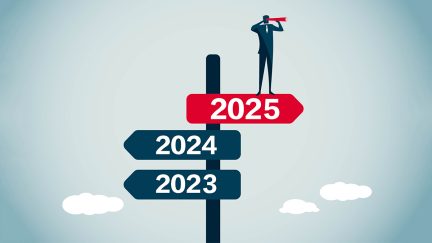Never miss a story — sign up for PLANADVISER newsletters to keep up on the latest retirement plan adviser news.
PSNC 2015: What Participants Really Want
In a presentation closing the 10th annual PLANSPONSOR National Conference in Chicago, Alison Cooke Mintzer, editor-in-chief of PLANSPONSOR, outlined key findings from this year’s PLANSPONSOR Participant Survey.
Data from the survey was presented in the April 2015 issue of PLANSPONSOR, but the presentation at PSNC included new cuts of the data that show clearly what participants want and expect from their plan sponsors, advisers and service providers. The sample is comprised of workers age 23 and older—65% of whom actively participate in a workplace retirement plan. Eleven percent of the sample has access to a plan but does not currently contribute money, and one in three have more than 10 years of tenure at their current employer.
Overall, the survey data shows a scant 35% of individuals are confident or very confident that they will achieve a secure retirement. The figure is a little better, at 41%, for active participants age 50 and older. Not surprisingly, only 25% of those lacking access to a plan at work are confident they’ll achieve a secure retirement.
The survey finds 76% of people who report being confident or very confident about retirement have $50,000 or more saved across all retirement accounts. This confidence is a good thing for the 22% in this group who have more than $500,000 saved—but overall the figure denotes dangerous overconfidence, as a single year’s health expenses in retirement average around $43,000 per year.
As Cooke Mintzer observed, “many of those people who report feeling confident are feeling confident at lower savings levels than we would like.”
She suggested one solution would be to frame savings as lifetime income, rather than a lump sum. “When they see $50,000 is only going to translate to a couple hundred bucks a month or less in retirement income, it could be a valuable reality check that shows they’re not really on track.”
NEXT: Employees cite stress across the board
In the face of savings hurdles, a strong majority of individuals in the survey (76%) reported at least mild financial stress, and 48% said their stress is moderate or severe. Nearly 32% are focused on paying off debt—including many in their 40s, 50s and even 60s.
This helps to explain the 51% of individuals who reported they want more guidance related to financial planning and financial wellness supplied by their employer. Thirty-eight percent want workplace training about investing basics and strategies, while 35% asked for help with saving and budgeting.
“People commonly reported that they want guidance about how much they should be saving—they want a specific number or percentage of income,” Cooke Mintzer noted. “As an industry, we’ve avoided that total number conversation. Only in the last two or three years has there been mass discussion of getting to a savings rate of 10% or total contribution with employer match near 12% or 15%. Many participants said they have no idea what goal they should be progressing towards.”
Drilling deeper into the desire for advice and guidance, 46% would prefer advice delivered through online tools or automated services. Importantly, only 26% said they would pay a premium for personalized and highly customized advice versus getting generic advice that is free.
NEXT: Plan sponsors play critical role in confidence
Highlighting the critical role plan sponsors play—especially in setting plan design—there were strong peaks in the occurrence of participant contribution rates around 3%, 5%, 6%, 10% and 15% of salary. As Cooke Mintzer explained, these are the numbers most commonly used by plan sponsors as the default auto-enrollment rate.
“The numbers clearly show plan sponsors have a lot of power in their hands to get people to save what they should be saving,” she said.
Asked how they arrived at their deferral rate, more than one-quarter of people in the survey said they did it to get the whole match. Nearly 20% are “trying to consistently hit a targeted savings level,” i.e., saving $100 per paycheck or $3,000 per year.
“Unfortunately, stretching the match is not always the answer here,” Cooke Mintzer said. “We do see a significant drop off in willingness to save to get the full match when you push it up to, say, 25% of the first 12% of salary deferred by the employee, rather than 50% of the first 6% of salary.”
One heartening statistic for plan sponsors: participants largely hold themselves accountable for failure to be better prepared for retirement. More than 75% of employees said their employer’s plan is excellent, very good, or good—and another 16% on top of that say their plan is fair, leaving just 2% giving their employer-sponsored retirement benefit a poor rating. Two percent said they were unsure.You Might Also Like:

Capital Group Names Top Focus Areas for DC Investment Consultants

Financial Wellness Moves From “Nice to Have” to Table Stakes



